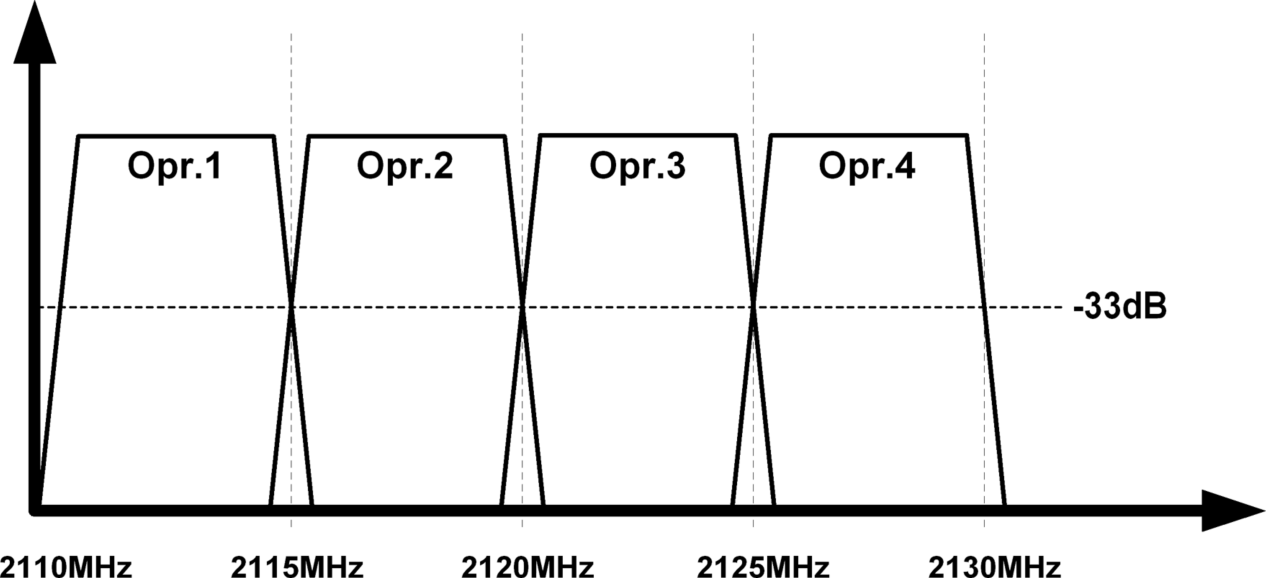5.9 Co-existence Issues for UMTS/UMTS
In an indoor DAS system it is very likely that operators will have adjacent channels active on the same DAS. Because of the limited selectivity of the filters used in the mobile and base station, power from one channel will leak into the adjacent channels.
5.9.1 Adjacent Channel Interference Power Ratio
This is the major issue when co-locating UMTS operators in the same building. It is specified that the adjacent channel suppression must be better than 33 dB (as shown in Figure 5.37), but this is in many cases not enough, especially indoors where you typically have users close to the antennas. A user being serviced by another operator (and therefore not in power control of the cell) is likely to cause adjacent channel interference power ratio (ACIR) when this mobile is close to the antenna, having low path loss. Conversely, the adjacent operator might impact your user when he is close to the other operator's antenna.
Figure 5.37 Channel allocation on UMTS

Noise Increase on Node B
The adjacent channel interference will cause noise increase on the UL of node B, degrading the capacity with noise load.
Example
We can calculate how much noise increase a mobile will generate and the noise load on our cell, when this mobile is being serviced by an adjacent operator and when the mobile is close to our antenna. The mobile on the adjacent channel is ...
Get Indoor Radio Planning: A Practical Guide for GSM, DCS, UMTS, HSPA and LTE, Second Edition now with the O’Reilly learning platform.
O’Reilly members experience books, live events, courses curated by job role, and more from O’Reilly and nearly 200 top publishers.

